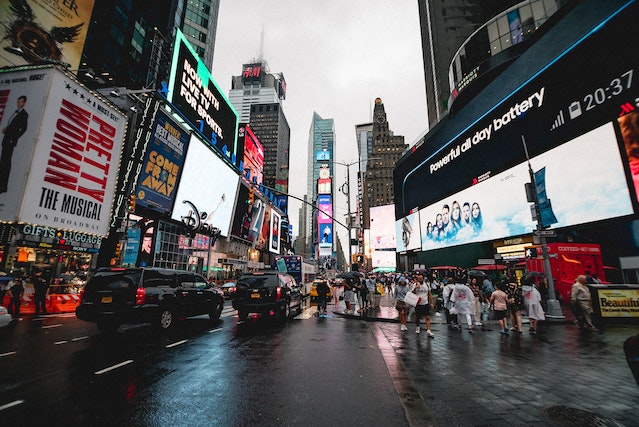
Why is Broadway so long? Before it became a road it was originally the Wickquasgeck trail.
Broadway is a street that runs through Manhattan. It is famous for having many of New York’s theaters on it. It is actually much longer than people think and stretches for 53.2 km. It starts at State Street in Bowling Green, which is at the southernmost end of Manhattan, near Battery Park where you can see the Statue of Liberty. It then goes up through Manhattan, through the Bronx, out of the North of New York, through several districts and towns before it ends at Sleepy Hollow. Where it ends, there doesn’t seem to be any sign of notice (I have only been able to look on Google Maps) and it just becomes another road. 53.2 km isn’t long enough to make it the longest road in the world. That honor goes to Yonge Street in Canada, which is a shade under 1,900 km. However, it does make Broadway a much longer street than most people realize.
We need to go back to the time before Europeans arrived in America to see why. The name Manhattan came from Manahahraan, which meant “place where we gather to make bows”. The area was inhabited by the Lenape people, and they called the area Lenapehoking, which meant “homelands of the Lenape”. Their territory stretched about 300 km north and south of where New York is today. They lived and hunted in the woodlands that made up the area. They first came into contact with Europeans when the Italian explorer Giovanni da Verrazzano arrived there. Then, Henry Hudson, who was an English explorer sailing for the Dutch East India Company, mapped out the river that would be named the Hudson River.
Many other indigenous tribes lived across the area and the tribes were usually decentralized. A group of people, such as the Lenape, formed many small settlements that were connected by a shared culture. There were other groups of tribes that had similar languages but saw themselves as different. This was particularly difficult for the arriving Europeans to understand, and they tended to name the indigenous tribes after the areas they lived in. One group of people were often separated into different tribes by the Europeans because they lived in different places.
Another group of people living in the area where New York is today were the Wappingers. They were a subgroup of the Lenape, and a smaller group of Wappingers called the Wickquaesgeek lived along the lower Hudson River. The Wickquaesgeek were separated into several settlements, and they used a trail to get between the settlements. The trail went around the swamps that were common on Manhattan Island.
The Dutch started to settle the area in the early 17th century. The Lenape tried to restrict their progress into the country, but a combination of the diseases the Europeans brought, and their weaponry, meant they would inevitably push on. The Dutch noticed the Wichquaesgeek using their trail and the Dutch called it Heere Wegh, which meant “Gentleman’s Way”. In 1624, the Dutch “bought” Manhattan Island from the Native Americans and started to build more settlements, including New Amsterdam. Heere Wegh became a useful road for the Dutch and a route for trade between the Dutch and the Native Americans. The road was about 25 meters wide and very muddy. The Dutch used it to drive their cattle along and they changed the name to Brede Wegh, which meant wide road.
Holland and Britain went to war over their colonies and in 1665, Britain took New Amsterdam from the Dutch and renamed it New York. They renamed Brede Wegh Broadway. The road was still a muddy mess, but as the city of New York started to grow, it improved. George Washington actually lived at 39-41 Broadway for a few months in 1790, but he ended up moving on to Philadelphia. The road was extended through the marshlands and in the 1800s it became a center of fashion, and the place to buy the Paris fashions when they arrived in America. By the later part of the 19th century, it had electric lighting and its first theaters.
These days, many people think Broadway is only the lower part of Manhattan and the part where the theaters are, but it stretches far further than that and is a reminder of how the Europeans rode roughshod over the Native Americans. And this is what I learned today.
Photo by Luis Dalvan: https://www.pexels.com/photo/people-at-times-square-new-york-1770775/
Sources
https://www.thetravel.com/learn-about-the-history-of-broadway/
http://www.anthropologyinpractice.com/2009/11/back-in-time-walking-wickquasgeck-trail.html
https://www.broadwaylinearpark.nyc/the-history-of-broadway-how-we-got-here
https://en.wikipedia.org/wiki/Lenape
https://en.wikipedia.org/wiki/Manhattan
https://en.wikipedia.org/wiki/Wappinger
